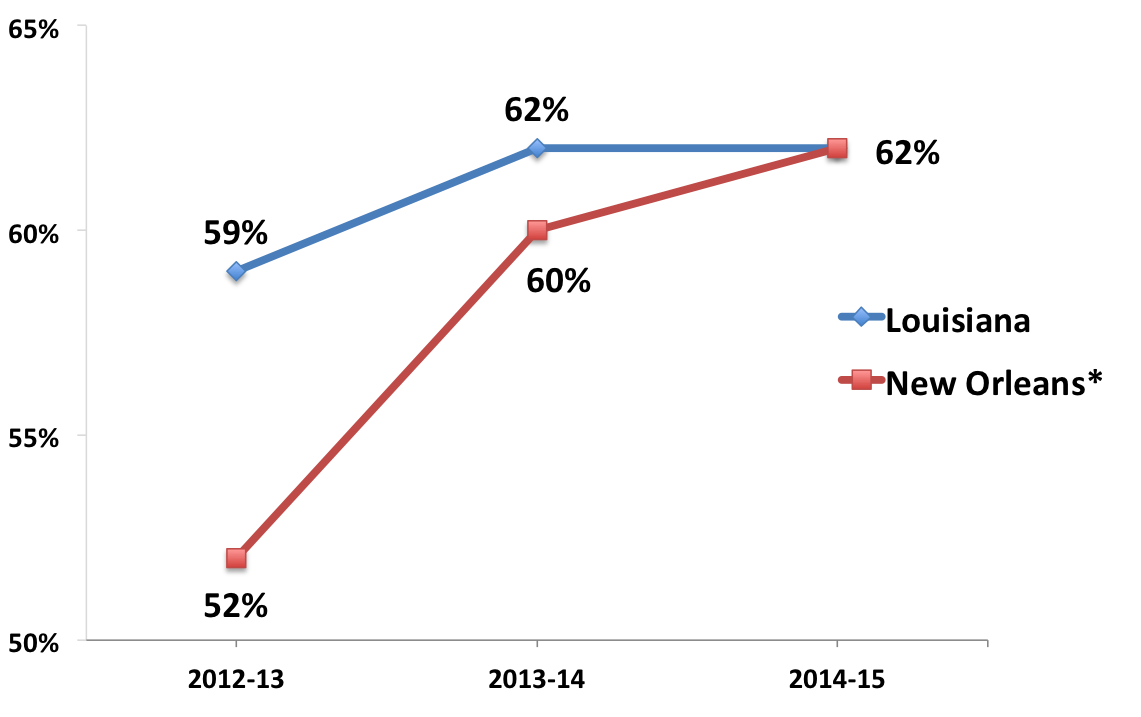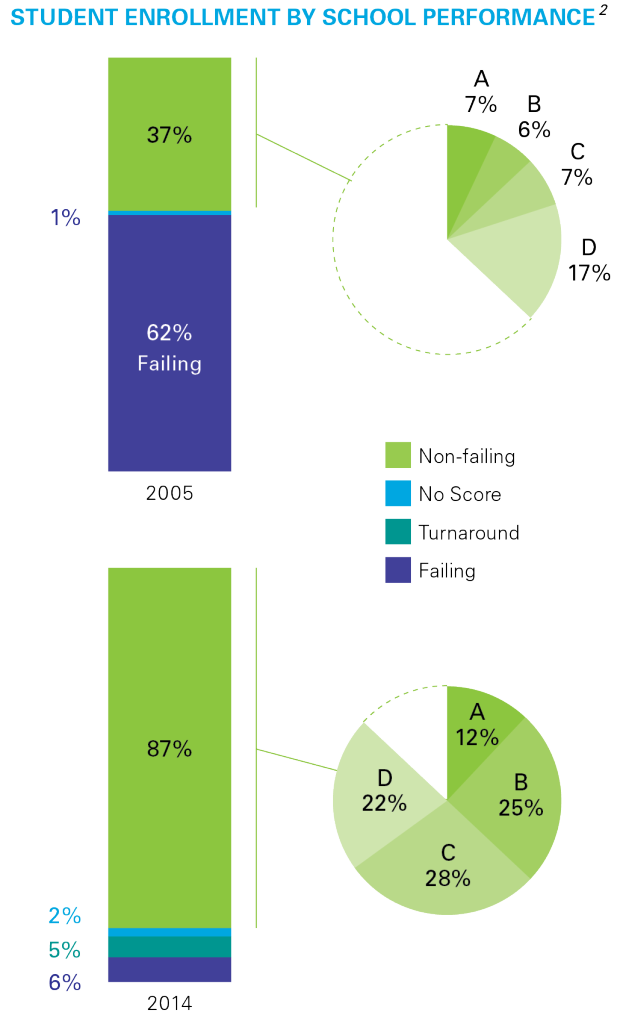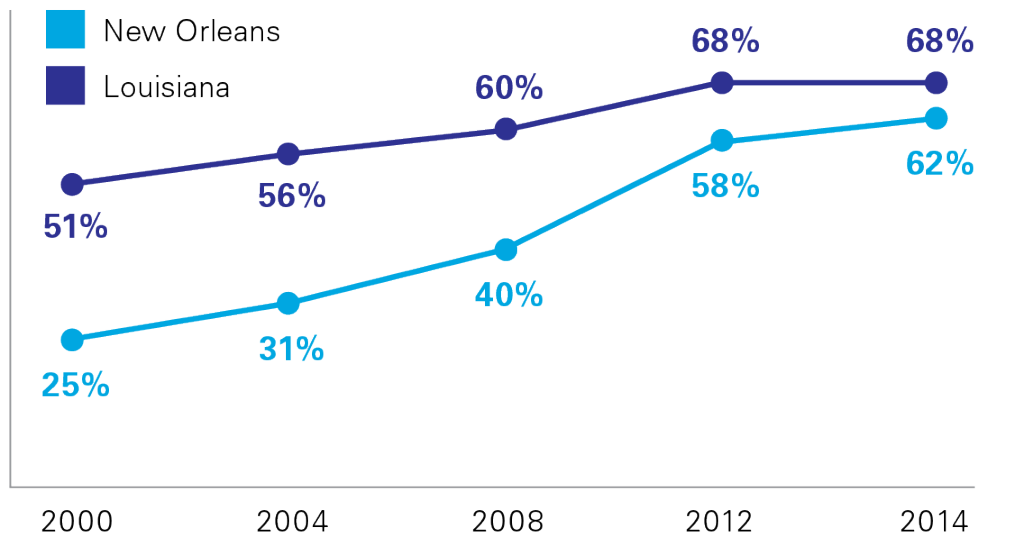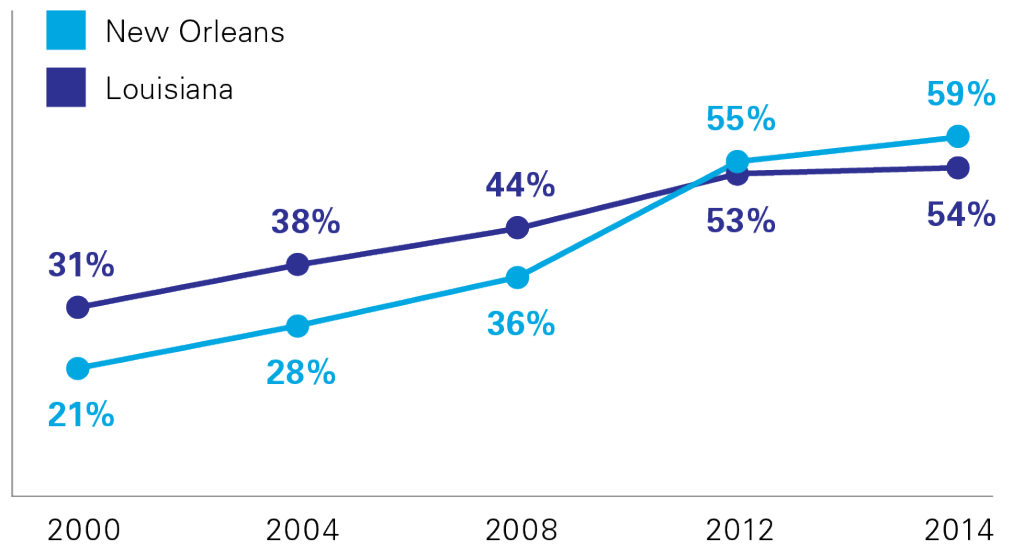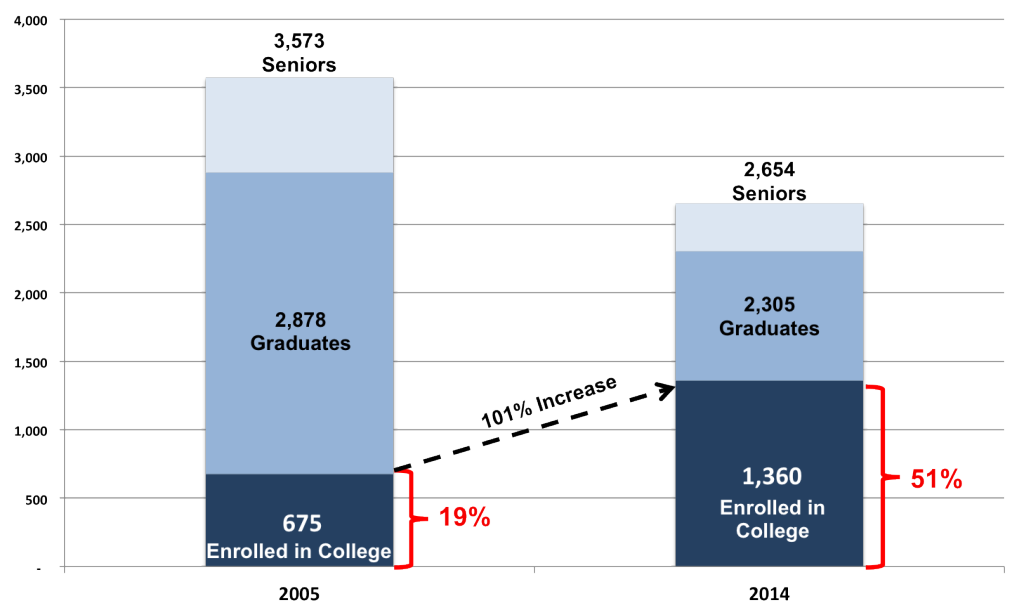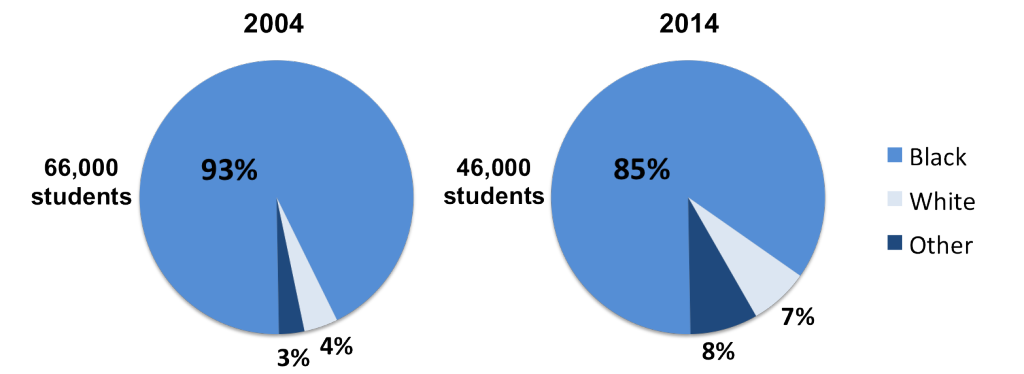New Orleans high schools are (finally) showing great improvement.
The state released Letter Grades and School Performance Scores (SPS) for most high schools1, and there is cause for celebration!
Highlights
- More than half of New Orleans high schools earned a letter grade of A or B. Five years ago, only two high schools had an A or B letter grades and both were selective admission schools (Ben Franklin and Lusher).
- New Orleans schools outperform other high-poverty high schools in Louisiana. Among schools statewide serving student populations where three-quarters or more of students are economically disadvantaged, New Orleans has the top 5 performing schools.
| School |
2015 Grade
|
SPS
|
| Edna Karr | A | 111.1 |
| Warren Easton | A | 109.2 |
| Sci High | B | 98.6 |
| KIPP Renaissance | B | 96.8 |
| Sci Academy | B | 96.3 |
- Four high schools were among the top 10 most improved in the state: KIPP Renaissance, Clark Prep, New Orleans Military and Maritime Academy, and Sci Academy.
- Eight high schools improved enough to change their letter grade.

